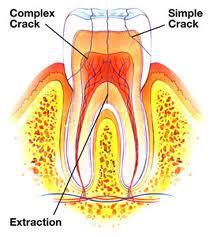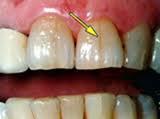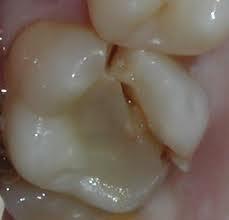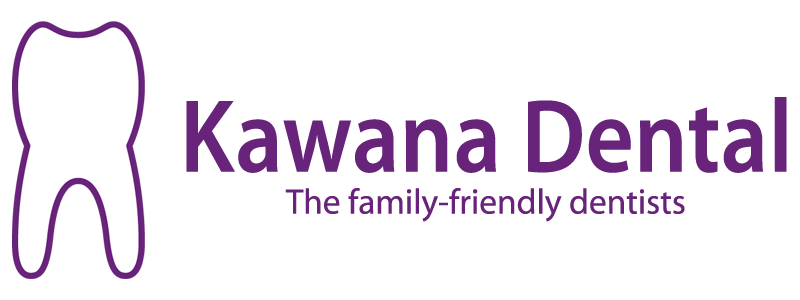30 Oct Cracked Teeth
Cracked Tooth Syndrome
Cracked tooth syndrome relates to a variety of symptoms and signs caused by a crack in a tooth. To improve the chances of saving a cracked tooth , early diagnosis and treatment are important. Most cracked teeth can be saved. If a crack is located and treated early, your dentist may be able to prevent the crack from progressing through the tooth.
The Dentist may use different terms to describe the crack, including craze fracture, crack or split. Sometimes dentists use these terms interchangeably and sometimes to describe a specific type of crack.
Cracked tooth syndrome usually occurs in a molar or premolar but may affect any tooth. The syndrome may involve:
- Teeth with large fillings or restorations where the crack runs under a weakened cusp (the raised edge of a tooth)
- Teeth with minimal or no fillings where the tooth has been subjected to heavy biting forces due to grinding
- Teeth that have suffered trauma.
Simple Crack:
The treatment for most cracked teeth involves removing the weakened cusp and placing a large filling or crown (cap) on the tooth. ( See Crowns )
Complex Crack:
If the crack has progressed to the pulp or has caused inflammation of the pulp, root canal treatment may be needed before the crown or filling is put in place. Root canal treatment requires two or three additional appointments. (See Root Canal Therapy)
Cracks may start in the top of the tooth and run downwards. These cracks may propagate and involve the pulp, nerve and root.
Prevention:
- If you clench your teeth or grind them together (bruxism), particularly at nighttime, you can have a special night guard made to protect your teeth this is called an occlusal splint. ( See Bruxism and Splints)
- Avoid chewing on hard objects such as ice, hard sweets, pens or pencils.
- Wear a protective mouth guard when playing contact sports.
- Practice good dental hygiene to minimise the need for fillings. Even with these precautions, teeth can still develop cracks.
Symptoms and Signs of a Cracked Tooth:
- Sharp and erratic pain upon chewing (especially when biting on grainy food) or after release of biting pressure: not all cracks cause pain.
- Pain or discomfort when the crack is exposed to cold or hot food or liquids.
- Sensitivity to sweet foods.
- Difficulty in pinpointing which tooth hurts or whether the pain is coming from a top or bottom tooth.
- The crack may not be visible to the eye or detectable on a dental x-ray film.
- If the crack extends below the gum, a pocket of gum disease may extend along the root surface.
- Often, a patient will present with a history of other cracked teeth.
Remember if you have cracked your tooth, don’t delay. Take advantage of our emergency dental services.






